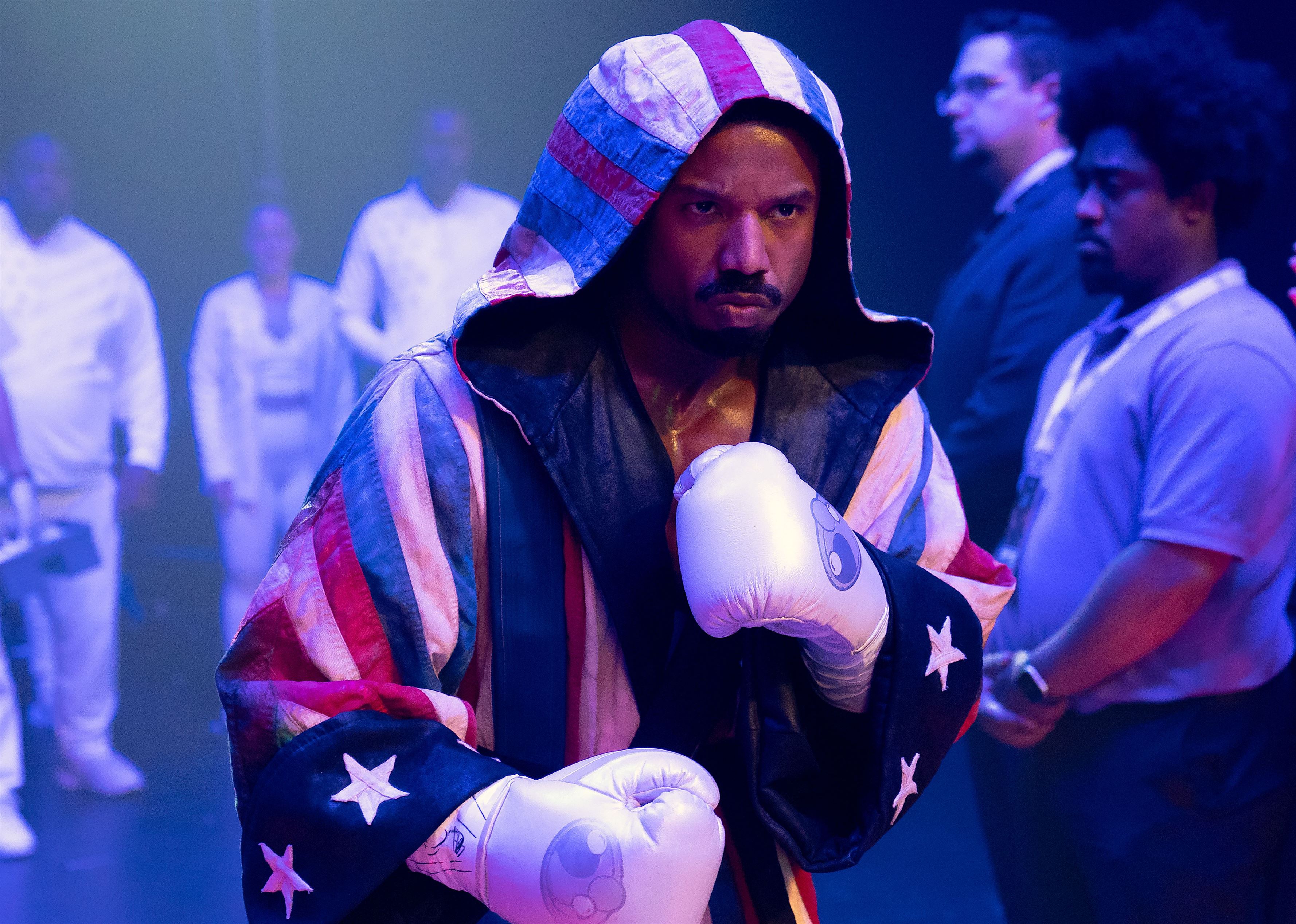Tears fall more than blood does in “Creed III” as viewers see it is evidently a film about more than just a physical fight, but rather an emotional battle.
Starring two Black male leads, Adonis Creed (Michael B. Jordan) and Damian Anderson (Jonathan Majors), “Creed III” encapsulates mental health, fatherhood, representation of marginalized communities and the complexities of Black masculinity. Viewers digest a film where sometimes one has to get knocked down to rise from adversity. It’s a theme that weighs heavily throughout this franchise.
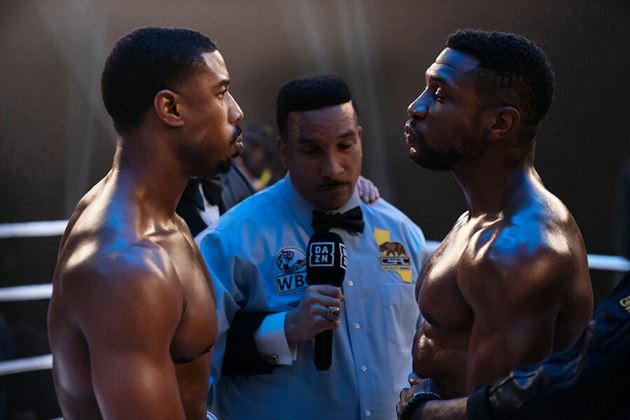
Adonis Creed and Damian Anderson stare at each other before their fight.
Photo courtesy of MGM Studios
Accomplishing many goals early on with and without Rocky (Sylvester Stallone), Adonis retires, trains the next generation of boxers and settles down with his wife Bianca (Tessa Thompson) and daughter Amara (Mila Davis-Kent).
However, as Adonis backs away from boxing, his past creeps up on him when his childhood friend, a boxing prodigy who was like a brother to him, Damian, gives him a visit. Damian is a free man that is trapped with unhealed scars from his past, leaving him wanting revenge.
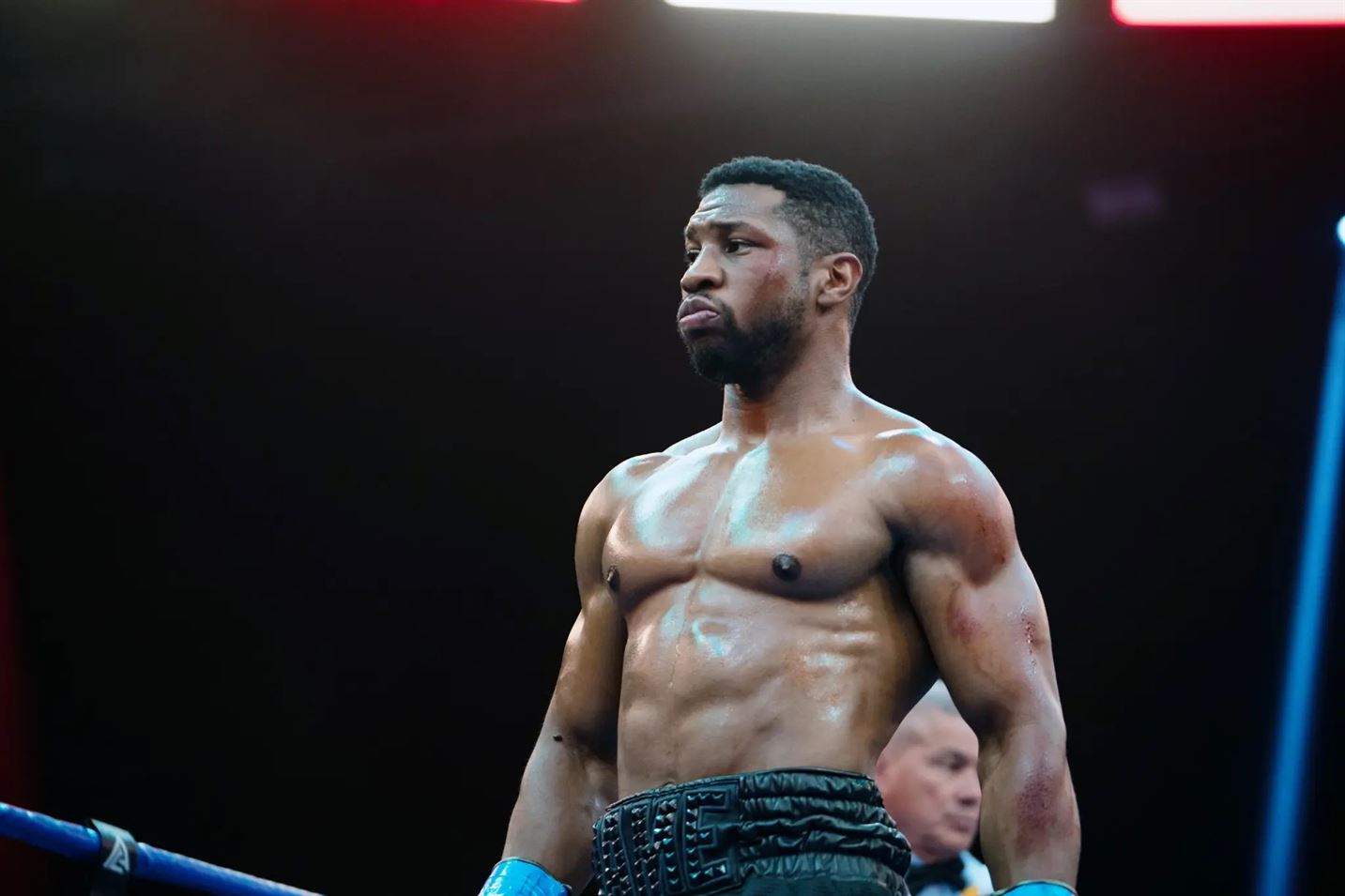
Jonathan Majors portrays Damian Anderson in “Creed III.”
Photo courtesy of MGM Studios
The two resurface their history, and Adonis realizes he can’t run from it. His mindset at the beginning of this situation foreshadows how one is going to have to deal with their inner demons and the clear dissonance he has.
The film emphasizes different topics in the mental health community such as guilt-tripping, gaslighting and manipulation and how these can cause one to develop unnecessary guilt. As Adonis experiences this inner conflict and refuses to communicate, he frustrates his wife Bianca, who desperately wants to know what’s going on and truly understand him.
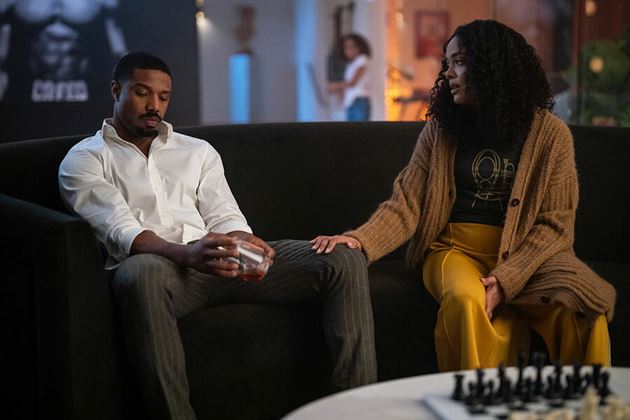
Bianca (Tessa Thompson) tries to get her husband Adonis Creed (Michael B. Jordan) to open up.
Photo courtesy of MGM Studios
This shows how Black men can experience inner conflict by suppressing their feelings – in other words: wanting to help others but not themselves.
But not only is Adonis a fighter, so is his wife. She sees why he’s acting this way and fights for their marriage. The women in his life arguably develop him into the man he becomes at the end of the film. This scene highlights an ongoing battle of Black masculinity in this “man’s world.” It’s something that women, particularly Black women, tolerate and are expected to fulfill through the stereotype of the “strong Black woman.”
This film demonstrates the importance of inclusivity when it comes to creating films because it enforces necessary topics to be highlighted by people who know what it’s like to experience these situations due to their background and the marginalized communities they grew up in.
Jordan profoundly does this through his strong storytelling skills in front of and behind the camera.
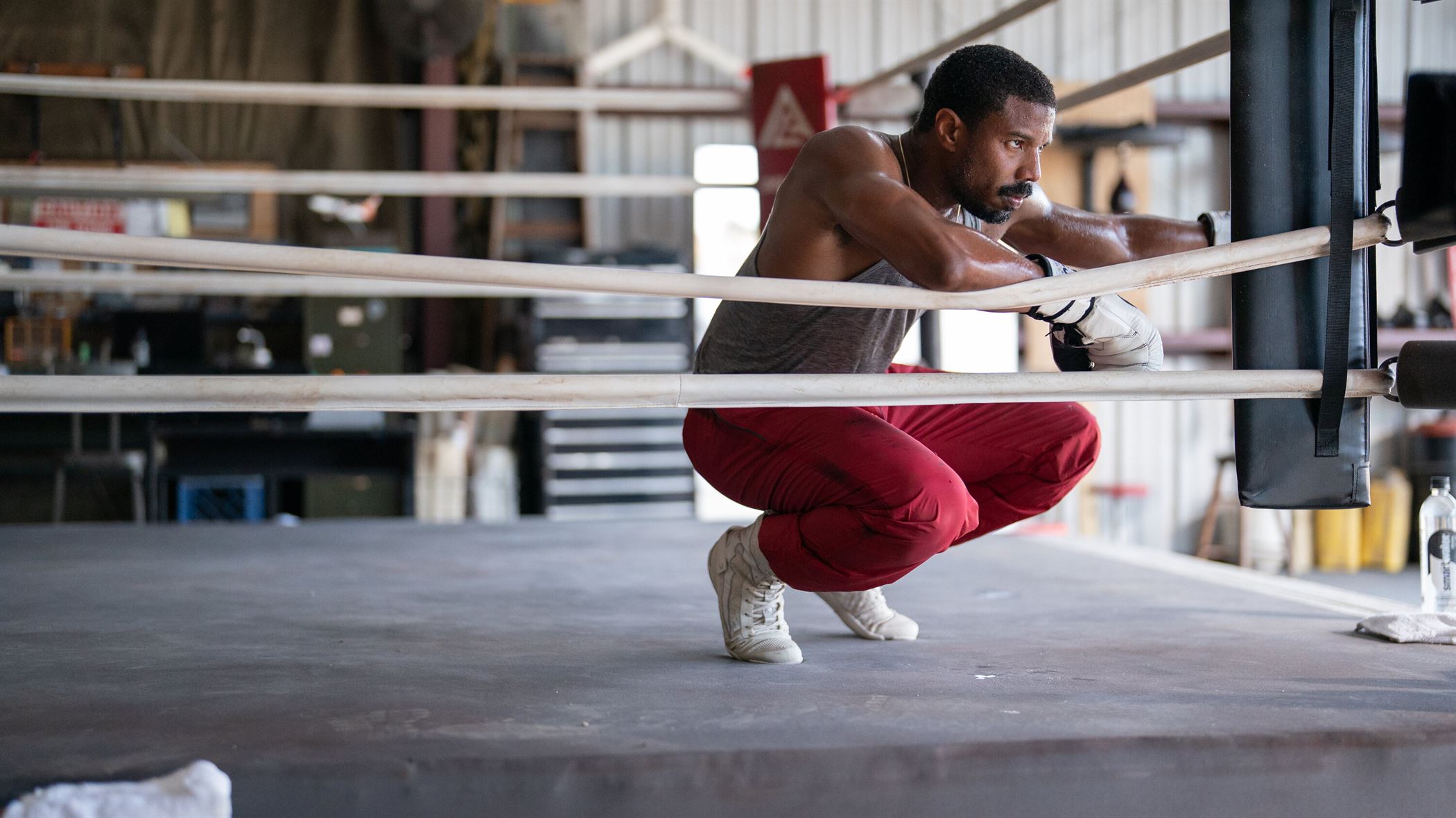
Adonis Creed (Michael B. Jordan) trains for his upcoming fight.
Photo courtesy of MGM Studios
With this being the ninth movie in the franchise, taking big and creative swings was necessary to keep it alive, and shooting each boxing scene with IMAX cameras was just the beginning. To craft things visually in a different way, Jordan took his immense love for Japanese anime and intertwined it into the final fight between Adonis and Damian, notably utilizing two iconic punches from “Naruto: Shippuden.”
But the biggest anime swing Jordan took was the “void.”
This fight was more than just a fight. It was pride, guilt and emotional impediments piling into the rings. Viewers are able to see this from a visual representation in a “void” of the lights of the sirens that night at the liquor store reflecting inside the ring, to bars of a jail cell symbolizing when Damian was imprisoned. He punches Jordan into the “cell,” insinuating that it should’ve been him. At the sound of the bell, there’s nothing but a spotlight on the two brothers.
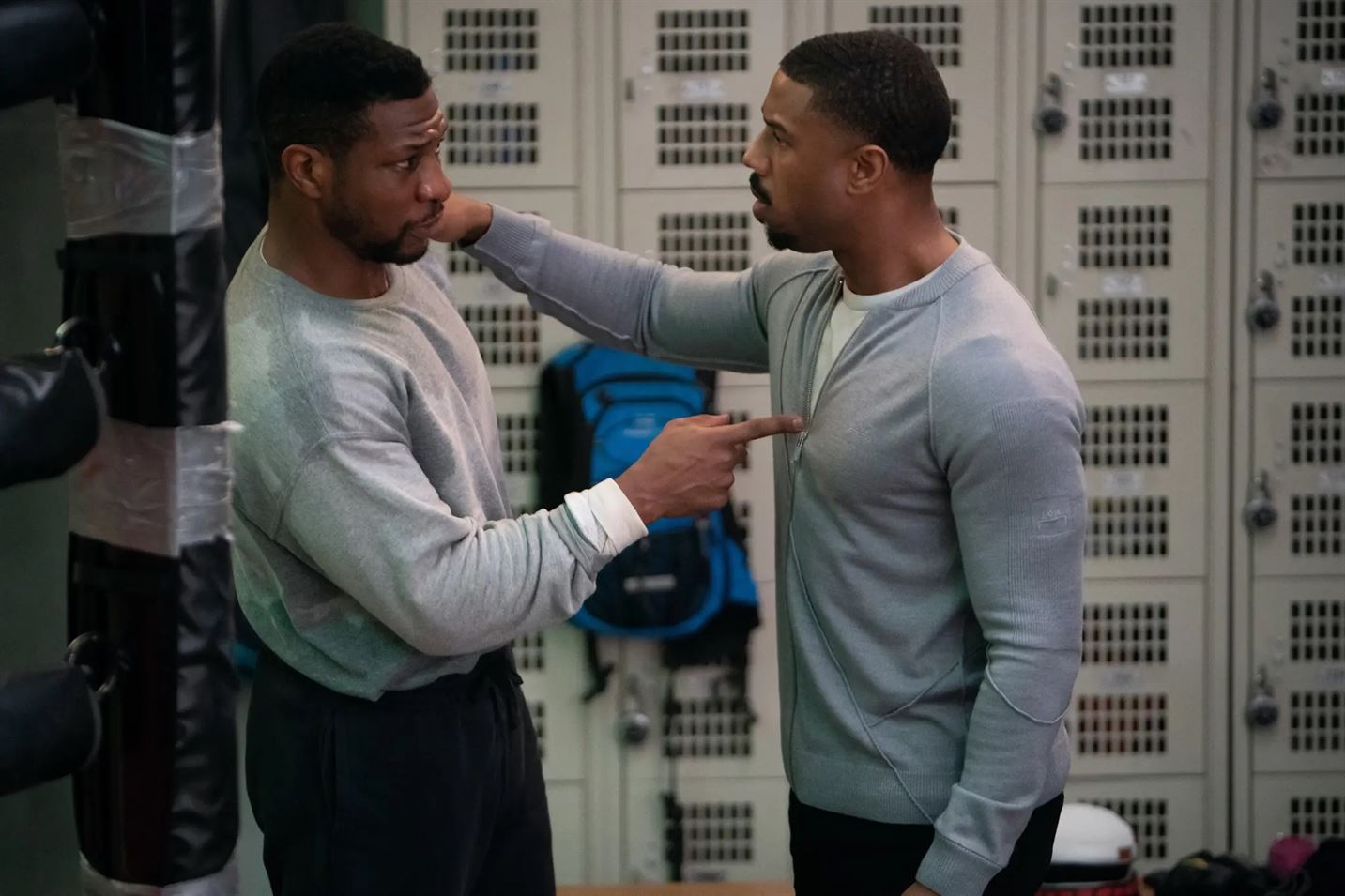
Adonis (Michael B. Jordan) and Damian (Jonathan Majors) talk in the locker room.
Photo courtesy of MGM Studios
Coming from a family who appreciates digital storytelling, Jordan is no stranger to this craft and is influenced by directors Ryan Coogler and Denzel Washington.
While Jordan leads on-screen in previous sequels, “Creed III” transitions into him leading off of it too. Despite its predictability, it was refreshing to see Jordan have a passion for working behind the scenes. He was intentional with detail, from ensuring that Damian’s body was covered to a tee until entering the ring to the cinematic angles and sounds that make the viewer feel like they are there.
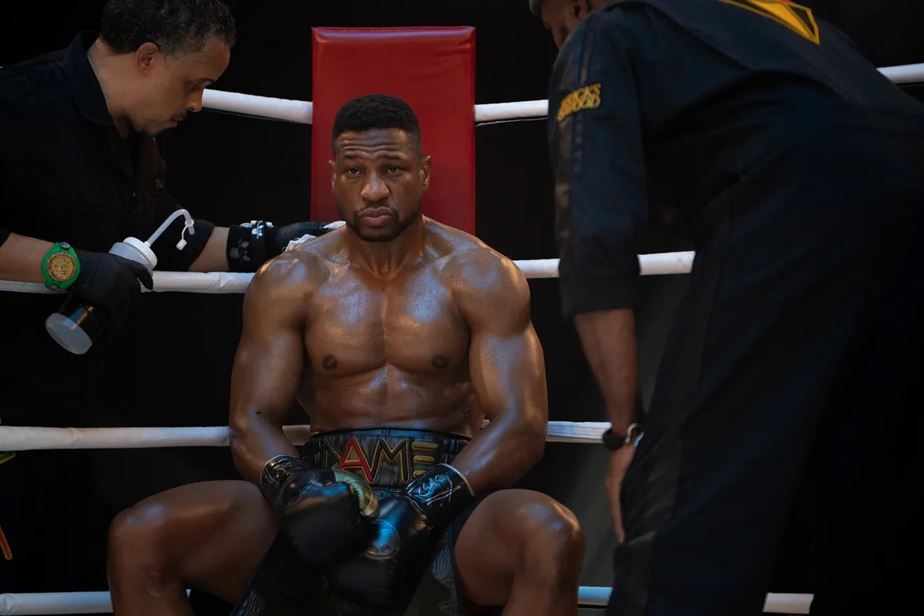
Damian Anderson (Jonathan Majors) gathers his thoughts as he gears up to enter another round of a boxing match.
Photo courtesy of MGM Studios
His dedication to his craft exudes throughout the film, and the way he tackles the beauty and struggle of relationships is indisputable. Adonis has moments of isolation while trying to navigate his emotions and struggles to be vulnerable but still finds himself with other people, shown through affectionate scenes with his daughter and wife, but also Damian, a person from his painful past that’s impacting his present self.
One thing we can also always count on Jordan for is to bring that representation and diversity. From the previous film, we learn that Adonis’ wife, Bianca, has progressive hearing loss and his newborn daughter, Amara, is deaf.
Now, seven years later, we get to see how Adonis has developed from a fighter into embracing every bit of fatherhood. If that means dressing up and having a tea party, then so be it. #Girldad. Amara is a gift to Adonis that makes him a better man, father and husband.
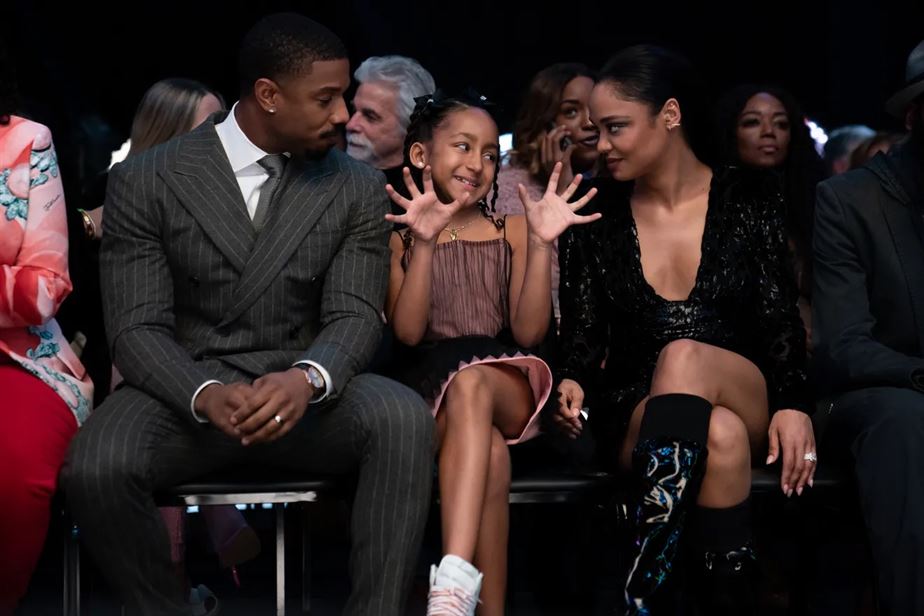
The Creeds have a family outing to watch a boxing match.
Photo courtesy of MGM Studios
But the real gift was the use of American Sign Language (ASL). This is not very common. When have you ever seen a film, let alone a sports movie heavily incorporating ASL? …. We’ll wait… Yeah, never. Once again, he did that.
Kent is deaf and plays a deaf child in a hearing family. Let that soak in. This is probably one of, if not the most, important message to share with the world. It’s giving a Black girl deaf magic. She is the past, the present and the future of the Creed legacy.
And as we watch Adonis and Amara sign, one thing to notice are the captions on the screen. When Adonis signs, the captions are gray, and as Amara signs, the captions are light pink. This was a nice touch and just adds to how detail-oriented Jordan really is.
Jordan has been working in the entertainment industry for almost 25 years, and with this serving as his directorial debut, it was certainly the perfect time for him to lock in and fully take the ropes of his character. And that started with the costume design.
It’s not something most directors would think to focus on first, but Jordan is a breed of one who is constantly thinking outside the box and fully invested in trying to raise the bar. So, not surprised there.
With the assistance of the film’s costume designer, Lizz Wolf, Jordan partnered with the iconic fashion designer Ralph Lauren to integrate how Adonis has really transformed and evolved over the past seven years.
As viewers, we’ve seen Adonis go from juvenile detention and the streets of Philly to the hidden hills of California. This evolution called for a more couture look, and as any fashion guru knows, Ralph Lauren is the epitome and exemplification of American fashion and luxury.
“Adonis Creed for Ralph Lauren” definitely has a nice ring to it.
The luxury designer created six different looks for Adonis that reflect and dip into old Hollywood icons’ style and classic men’s Made-to-Measure tailoring. Merging the worlds of sport and style, each look was impeccably crafted to underline the polished, strong and successful life that Adonis lives. From a sleek black trench coat to RL Purple Label suits and high-end sweatshirts made out of terry cloth fabric, he wore the heck out of them, that’s for sure. His physique is unmatched. There is a reason Jordan was named 2020’s Sexiest Man Alive.
This being a first-of-its-kind partnership for Ralph Lauren, it was important for it to swing beyond the idea of fashion. While Adonis battled his survivor’s guilt and confronted the sins of his past, there’s a moment when he’s driving down Sunset Boulevard and he spots himself on a Ralph Lauren campaign billboard.
This is the definition of the American dream. The placement of the billboard essentially gave room for Adonis to tap into his feelings. To see his success. To see the legacy he’s building. To see the impact he’s making during a time when he didn’t even perceive himself as prestigious.
Knowing Jordan’s director itch and creativity, we had to have known that wasn’t the only gem he was going to sprinkle on us. Everyone knows that when you walk out to that ring, the boxing robe and trunks have to be on point. In the “Rocky” series, Adonis’ father, Apollo Creed (Carl Weathers), traditionally wore the American flag; however, Jordan refrains from incorporating that element into his shorts due to the horrid presidency of Donald Trump.
During Apollo’s era, the flag represented something drastically different, but now with the American Flag being somewhat triggering, Jordan sought out a way to reset Adonis being the Americana figure while still sticking to his roots. To keep that sense of a professional Black male, Adonis wore an all white pair of trunks infused with a shadow of the American flag, which evidently mirrored him going into the ring to face his trauma and move forward.
The symbolism doesn’t stop there though.
Adonis’ robe was influenced by artist Theaster Gates’ “Civil Tapestry 4,” a piece that was constructed out of fire hoses used against protesters during the Civil Rights Movement. While illustrating the struggle of what American freedom really is, the robe additionally featured an almost ombre fade from red, white and blue to red, black and green to specifically display how Black people have and always will be fighting for their liberation. It’s a subtle yet very loud symbol.
Without a doubt, “Creed III” has passed the “franchise fatigue” with another knockout. A newfound brotherhood has entered the ring and is officially taking over Hollywood, and they might just be the next Muhammad Ali vs. Joe Frazier II.

